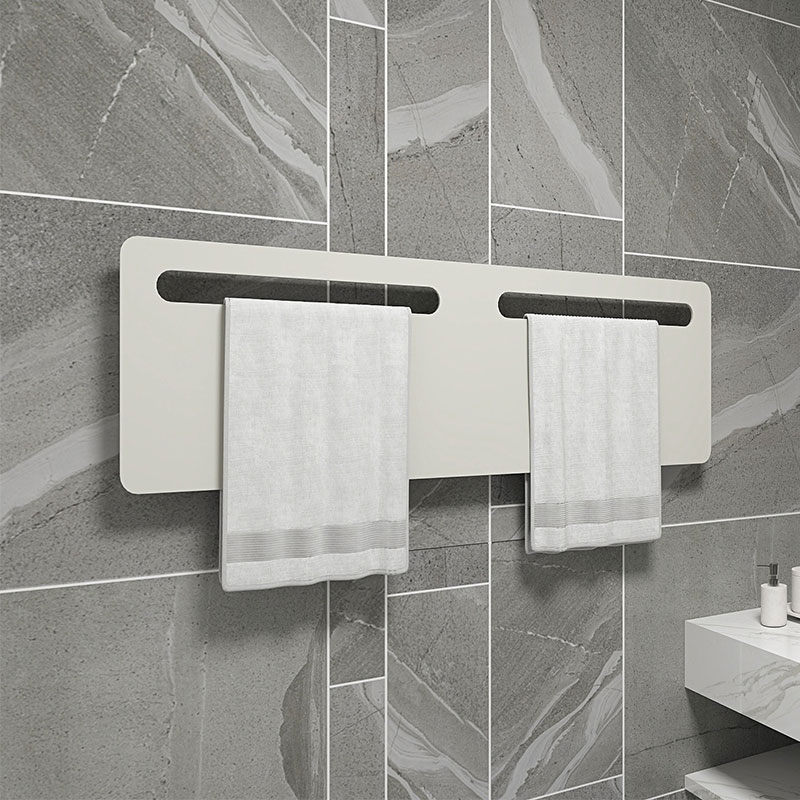Are Electric Towel Rails Expensive To Run
Electric towel rails are often judged by the comfort they provide rather than the watts they consume. The real cost depends on power rating, daily usage, control system, and how efficiently the rail transfers heat. When chosen correctly, an electric towel rail can deliver daily comfort without a noticeable rise in your electricity bill. This article explains how running costs are calculated, provides practical examples, and shows how to optimize efficiency. Our electric towel rails are built for stable heat output and low energy consumption, combining performance with economy.
1. Factors That Determine Running Cost
Wattage and electricity tariff
Every electric towel rail has a rated wattage, usually between 150W and 600W. The cost to run is based on the formula:
Cost = Power (kW) × Hours Used × Electricity Rate (per kWh)
If your electricity rate is $0.30 per kWh, a 300W (0.3kW) rail used for one hour consumes 0.3 × 1 × 0.30 = $0.09. The label wattage is the maximum draw, but modern thermostats reduce this by cycling power on and off.
Thermostat efficiency
A thermostat keeps the rail at a set temperature by switching it off when heat demand is met. A quality rail may operate only 30–50% of the time, known as its duty cycle. For example, at 40% duty, a 300W rail averages just 120W consumption per hour, significantly lowering cost.
Room size and installation
Smaller, well-insulated bathrooms hold heat better, requiring less runtime. Large bathrooms or external walls cause faster heat loss. Mounting height, wall clearance, and towel thickness also affect performance—too many thick towels restrict airflow, making the rail work harder and use more energy.
Control type and user habits
Simple on/off switches waste power if left running. Programmable timers and smart thermostats limit usage to set hours. Advanced models detect temperature drops (like when a window opens) and automatically pause heating. Your habits—like remembering to switch it off—play a big role in overall cost.
2. Practical Running Cost Examples
Small cloakroom
A 150W towel rail running 2 hours per day at a 40% duty cycle uses:
0.15kW × 2h × 0.4 = 0.12kWh/day
At $0.30/kWh, that’s about $0.04/day or $1.20/month.
Family bathroom
A 400W rail operating 3 hours daily at 45% duty cycle uses:
0.4kW × 3h × 0.45 = 0.54kWh/day
That’s roughly $0.16/day or $4.80/month.
Heavy towel drying
If a 500W rail runs 2 hours at 60% duty cycle, it consumes 0.6kWh/day, costing $0.18/day. Occasional boosts for wet towels have minimal impact on your bill.
All-day background warmth
A 300W oil-filled rail on low setting for 8 hours at 25% duty uses 0.6kWh/day, costing around $0.18/day. Ideal for winter comfort without high bills.
3. How To Reduce Electricity Costs
Choose the right wattage
A rail that’s too small runs constantly; too large cycles excessively. Match power to room size:
| Bathroom Type | Recommended Power |
|---|---|
| Small cloakroom | 100–150W |
| Standard bathroom | 300–500W |
| Large or open-plan | 500–600W |
Selecting the correct size ensures optimal heat without overconsumption.
Schedule intelligently
Use a timer to preheat before morning showers or evening baths, then switch off automatically. A seven-day schedule prevents accidental all-day use. “Holiday mode” avoids standby costs while away.
Maintain airflow
Avoid stacking thick towels that block air circulation. Spread towels evenly so heat radiates efficiently. Even spacing can shorten drying time by 30%, reducing runtime and saving power.
Improve bathroom insulation
Seal drafts, close doors during heating, and ensure your extractor fan doesn’t overrun. A sealed room holds heat longer, allowing the rail to switch off sooner.
Use smart controls
Modern electric towel rails with digital thermostats and open-window sensors detect sudden drops in temperature and pause heating automatically. These features can save 10–15% annually without affecting comfort.
4. Cost-Efficient Benefits Of Our Electric Towel Rails
Precision temperature control
Our rails use thermostatic elements that maintain stable heat while avoiding unnecessary cycling. Each unit can be set between 30°C and 70°C depending on room needs, ensuring warmth without waste.
Energy-efficient design
Advanced heating elements convert power directly into radiant and convective heat with minimal loss. The even heat distribution across bars means towels dry faster, reducing runtime. In most homes, real consumption averages under 1kWh per day.
High-quality materials and finishes
Constructed from polished stainless steel or aluminum, our rails retain heat longer after shut-off, effectively providing “free residual warmth.” Durable coatings resist corrosion and retain reflectivity, which enhances radiant output.
Smart operation and safety
Features include programmable timers, temperature limiters, and optional Wi-Fi control. You can monitor usage remotely, adjust schedules, and track consumption data—ideal for optimizing comfort while staying energy-conscious.
Long-term value
Compared with central heating systems, electric towel rails are independent, meaning you heat only the towel area, not the entire house. Maintenance costs are near zero, with no pipes, pumps, or leaks to service. Even with regular use, annual energy cost typically stays below $60–$80 for most households.
Final Verdict
So, are electric towel rails expensive to run? Not at all—when properly sized and used. A 300–400W rail, running a few hours daily with thermostat control, costs only a few cents per day. The convenience of warm, dry towels and a comfortable bathroom outweighs the small operating cost.
With our electric towel rails, you benefit from:
Fast heating and efficient operation
Smart temperature control and safety features
Long lifespan and low maintenance
Sleek designs that complement modern interiors
Comfort doesn’t have to mean high energy bills. Choose an efficient electric towel rail, use it wisely, and enjoy everyday luxury for minimal cost.




